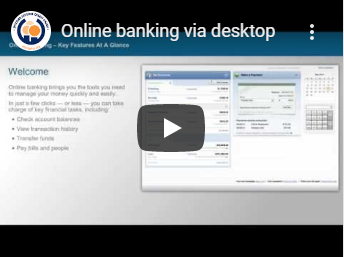In today’s up-to-date world, individuals use every supply to make their hectic lives a little easier. The World Wide Web has through many menial tasks plentiful simpler and more rapidly to execute than they valor otherwise be done through conventional methods. An email to Australia, for example, can be delivered in seconds; however, the matching letter lead by regular mail could take several days or even weeks to arrive at its destination. Similarly, with a few clicks of our mouse, it’s conceivable to have td bank login our weekly groceries packed and delivered to our front door, lacking us ever requiring to leave the house. However, for countless World Wide Web users, online banking is a bone of contention as doubts about banking security remain copiously clear. New figures have exposed that 21 percent of British internet users feared being a dupe of a phishing scam or ID stealing more than car robbery, burglary then even assault. However, online banking needn’t be an ordeal, so how do we protect ourself from fraudsters? Firstly, the way we set up our login details for our online banking account is vital to safeguard our explanation’s honesty. Many persons tend to select easily memorable passwords, such as a child’s or pet’s name, but these can be guessed. As an alternative, pick a username and password entailing a blend of letters and facts and avoid employing the same key for other working accounts.

Photograph
- Secondly, crisscross to make sure the put we are on is safe as houses. To do this, crisscross that our internet browser displays a small catch photograph at the bottom of our curtain. This icon points out that any statistics we enter and send over and done with the internet will be put into code, producing it much more trustworthy for internet thieves to stop and decipher the data. Phishing has developed approximately a buzzword when it derives from an internet scam, with losses unpaid to phishing rip-offs reaching £23 billion by the end of 2006. Phishing is a method used by swindlers to acquire complex information such as usernames, watchwords, and credit card minutiae. They are masked as a dependable unit in an electronic message – most commonly via email. Phishing emails naturally take the form of a certified file from a bank, credit card concern, or other monetary institution and entitlements that there has been a problem with the user’s interpretation, or desires the user bring up-to-date their details. The email regularly includes a link to follow, which redirects the manipulator to a dummy site, anywhere users input sensitive data, including usernames, account numbers, and passwords. These dummy sites remind us of the authentic websites of whole societies and can clasp unsuspicious users. Remember, our bank will certainly not send us an email asking us to update our details online, so if we receive an email like this, the best course of deed is to use the delete key. Using a good antivirus software sequencer can offer extra protection from Trojans and additional software designed to gather our processer’s facts. These programs are frequently disguised as common software claims and can log keystrokes completed by the worker, such as keys and credit card numbers. There are also databases designed to destroy these malicious pieces of machinery and preserve our data’s integrity, many of which stay free to use.


